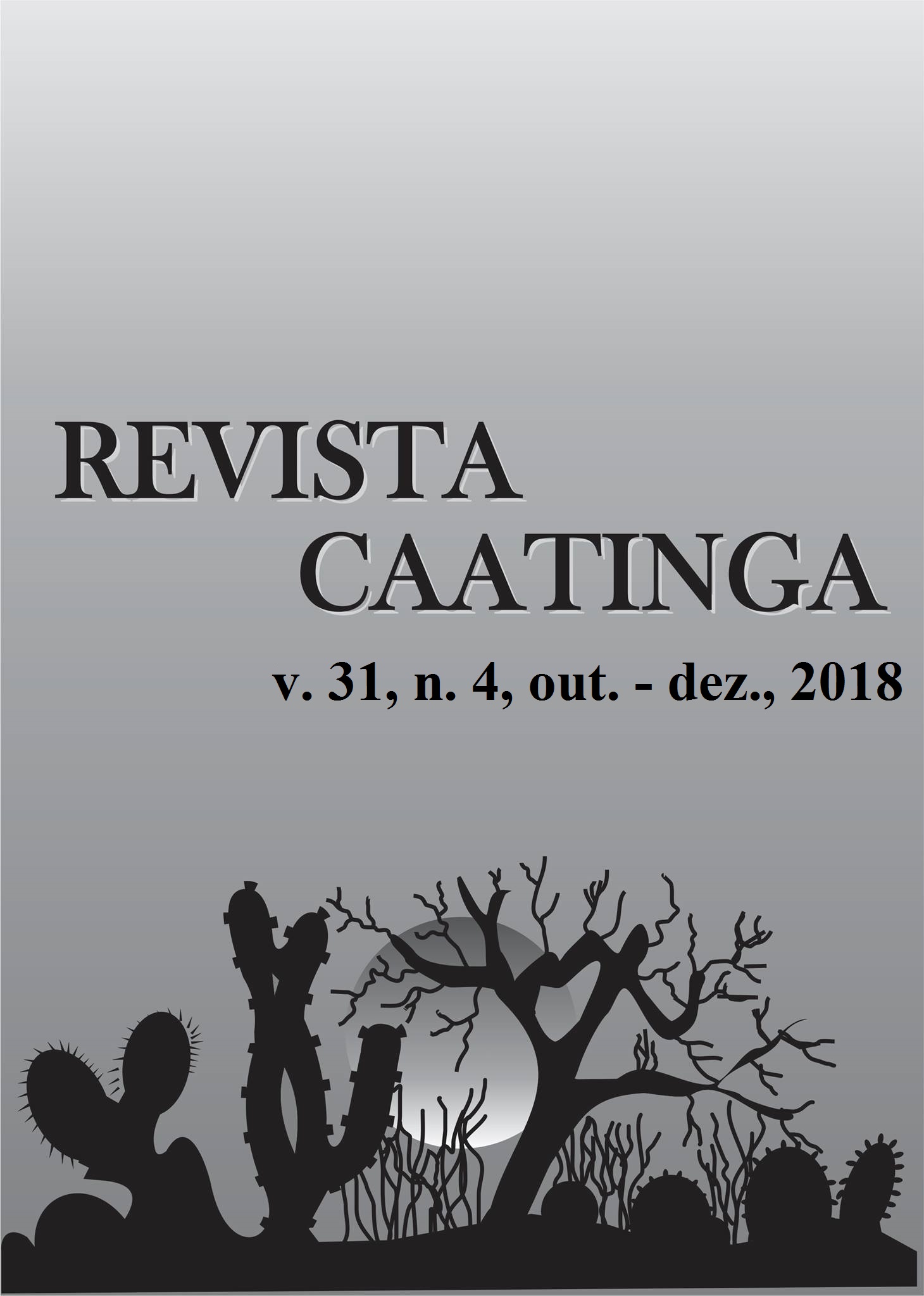SEED, SEEDLING AND FRUIT MORPHOLOGY AND SEED GERMINATION OF Psidium sobralianum PLANTS OF THE SÃO FRANCISCO VALLEY, BRAZIL
DOI:
https://doi.org/10.1590/1983-21252018v31n415rcKeywords:
Myrtaceae. Araçá. Vigor test. Imbibition test.Abstract
The Northeast region of Brazil has the second highest number of species of the Myrtaceae family. It is mostly covered by the Caatinga biome, which is very degraded, making it difficult to preserve species of this family. Thus, the objective of this work was to describe the seed, seedling, and fruit morphology, and seed germination of Psidium sobralianum Landrum & Proença plants of the São Francisco Valley, Brazil. The fruits were collected in an area of the Brazilian Agricultural Research Corporation (Embrapa Semiarid), in Petrolina PE, Brazil. The evaluations consisted of determinations of fruit shape, consistency, and number of seeds; seed form, cotyledons, hilum, hypocotyl-radicle axis, and embryo type; epicarp, mesocarp, endocarp, and seed staining; longitudinal, transversal, and ventral diameters of fruits and seeds; fruit, pulp, and seed fresh and dry masses; germination test; first count of germinated seeds; germination speed index; shoot and root lengths; shoot and root fresh and dry masses; and imbibition test. Psidium sobralianum has polyspermic, berry fruits, subclassified as solanidium, with persistent sepals and globular shape, consisting of epicarp, mesocarp, endocarp and seeds. The fruits have green with orange epicarp, pale-green mesocarp, and white endocarp. The seeds have a pilose and bony aspect, a pimentoid type of embryo, foliaceous cotyledons, presence of operculum and hilum, and pale-yellow tegument. The germination is epigeal phanerocotiledonar, with root protrusion from 26 days after sowing (DAS); it presents a short, glabrous, thick radicle, and a rounded, pale-green apex. The germination is slow, probably due to the mechanical barrier of the tegument, and stabilizes at 90 DAS.
Downloads
Downloads
Published
Issue
Section
License
Os Autores que publicam na Revista Caatinga concordam com os seguintes termos:
a) Os Autores mantêm os direitos autorais e concedem à revista o direito de primeira publicação, com o trabalho simultaneamente licenciado sob a Licença Creative Commons do tipo atribuição CC-BY, para todo o conteúdo do periódico, exceto onde estiver identificado, que permite o compartilhamento do trabalho com reconhecimento da autoria e publicação inicial nesta revista, sem fins comerciais.
b) Os Autores têm autorização para distribuição não-exclusiva da versão do trabalho publicada nesta revista (ex.: publicar em repositório institucional ou como capítulo de livro), com reconhecimento de autoria e publicação inicial nesta revista.
c) Os Autores têm permissão e são estimulados a publicar e distribuir seu trabalho online (ex.: em repositórios institucionais ou na sua página pessoal) a qualquer ponto antes ou durante o processo editorial, já que isso pode gerar alterações produtivas, bem como aumentar o impacto e a citação do trabalho publicado (Veja O Efeito do Acesso Livre).







